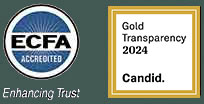Guest Blog from Crossway – Sponsors of Dallas 2015
Acts 29 is not just about wanting to see churches planted, it is the kind of churches that are planted that counts. In this post Ray Ortlund helps us see that healthy, church-planting churches are centered on the gospel of Christ.
“Evangelion (what we call “the gospel”) is a Greek word, signifying good, merry, glad and joyful news, that makes a man’s heart glad and makes him sing, dance and leap for joy.” [1] —William Tyndale
William Tyndale, the pioneer translator of the Bible into English, wrote those delightful words in 1525. And he sealed them with a martyr’s death. What a world we live in, that something so happy would be so hated! But so it is.
The gospel is a welcome announcement, declaring that Jesus paid it all.
As Tyndale pointed out, the very form of the Greek word translated “gospel” means good news. [2] The gospel is not law, demanding that we pay our own way. The gospel is a welcome announcement, declaring that Jesus paid it all. It’s like a long-awaited telephone call. When the phone finally rings, we grab the phone and eagerly take that call. This gospel is a message to be proclaimed and believed (Mark 1:14–15). It is the point of the whole Bible (Gal. 3:8). It comes from God above (Gal. 1:11–12). It is worthy of our utmost (Phil. 1:27–30).
Here is the essential message Bible-believing people rally around:
God, through the perfect life, atoning death, and bodily resurrection of Jesus Christ, rescues all his people from the wrath of God into peace with God, with a promise of the full restoration of his created order forever—all to the praise of the glory of his grace.
Salvation from the judgment of God into fellowship with God is all of God. It is not of us. That is good news indeed! And this gospel is widely known and sincerely preached in our churches today.
Something Troubling
But here is something troubling. If a message so good lies at the defining center of our churches, why do we see such bad things in those same churches—ranging from active strife to sheer exhaustion? Where is the saving power of the gospel? Why don’t we see more of Tyndale’s singing, dancing, and leaping for joy in our churches, if the good news is setting the tone?
In his prophetic book Witness, Whittaker Chambers tells of a young German woman whose father had been fervently pro-Communist. Then he became strongly anti-Communist. Why? She said: “You will laugh at me, but you must not laugh at my father. One night, in Moscow, he heard screams. That’s all. Simply one night he heard screams.” [3]
This happens in our churches too. People come to hear good news. But then they hear screams. They hear cries of anguish and distress in churches that preach the gospel in concept but inflict pain in reality. That is shocking, but it is not new.
How many people in our cities are ex-Christians, and even strongly anti-Christian, because they went to church to hear “good news of great joy” (Luke 2:10) but it was drowned out by strife and trouble? Let’s not assume that our churches are faithful to the gospel. Let’s examine whether they are. After all, as Dr Martyn Lloyd-Jones wrote “Every institution tends to produce its opposite.” [4] A church with the truth of the gospel in its theology can produce the opposite of the gospel in its practice.
The Test of the Gospel-Centred Church
Not long after his life-altering crisis of faith, brought on by the personal ugliness he saw in his denomination, Francis Schaeffer wrote an article entitled “How Heresy Should Be Met.” Here is his main point:
The final problem is not to prove men wrong but to win them back to Christ. Therefore, the only ultimately successful apologetic is, first, a clear, intellectual statement of what is wrong with the false doctrine, plus a clear, intellectual return to the proper scriptural emphasis, in all its vitality and in its relation to the total Christian faith, plus a demonstration in the life that this correct and vital scriptural emphasis meets the genuine needs and aspirations of men in a way that Satan’s counterfeit does not. [5]
The test of a gospel-centered church is its doctrine on paper plus its culture in practice.
So the test of a gospel-centered church is its doctrine on paper plus its culture in practice—“a demonstration in the life that this correct and vital scriptural emphasis meets the genuine needs and aspirations of men.” If a church’s gospel culture has been lost, or was never built, the only remedy is found at the feet of Christ. That church needs a fresh rediscovery of his gospel in all its beauty. It needs to prayerfully reconsider everything it believes and practices. Nothing is gained by merely repackaging the church in forms more attractive to outsiders.
First and foremost, the gospel of Christ must be fully believed and embraced by our churches. That is more profound than a momentary upsurge of enthusiasm. The need of our times is nothing less than the re-Christianization of our churches, according to the gospel alone, in both doctrine and culture, by Christ himself. Nothing less than the beauty of Christ will suffice today, though what a renewed church will look like might, at present, lie beyond our imaginations.
Adapted from The Gospel: How the Church Portrays the Beauty of Christ (Crossway, 2014)
About Crossway
Crossway is a not-for-profit Christian ministry that exists solely for the purpose of proclaiming the good news about Jesus through gospel-centered, Bible-centered content that will honor our Savior and serve his Church. We seek to help people understand the massive implications of the gospel and the truth of God’s Word, for all of life, for all eternity, and for the glory of God.
[1] William Tyndale, “A Pathway into the Holy Scripture,” in Doctrinal Treatises (Cambridge: The University Press, 1848), 8. Style updated. [2] F. Blass and A. Debrunner, A Greek Grammar of the New Testament and Other Early Christian Literature, trans. Robert W. Funk (Chicago: The University of Chicago Press, 1973), § 119(1). [3] Whittaker Chambers, Witness (New York: Random House, 1952), 14. Edited for clarity. [4] D. Martyn Lloyd-Jones, What Is an Evangelical? (Edinburgh: Banner of Truth, 1992), 9–10. Lloyd-Jones continues: “The position of most of the Protestant churches today is almost the exact opposite of their position when they originally came into being. . . . It is no use assuming that because a thing has started correctly it is going to continue to be correct. There is a process at work, because of sin and evil, which tends to produce not only change but even degeneration.” [5] Francis A. Schaeffer, “How Heresy Should Be Met,” Reformation Review, July 1954, 9. Emphasis original.









